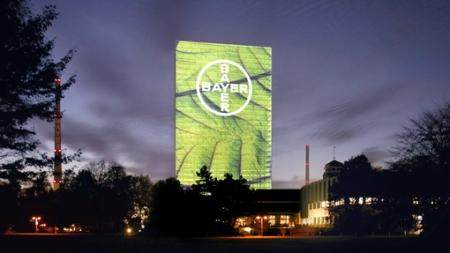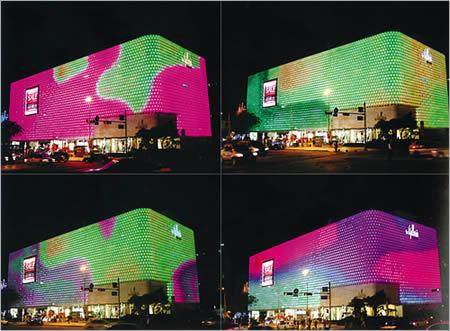




My books, movies, videos, podcasts, events ... the big collection of paul wheaton stuff!




Are you saying that LED's put out less light after six months? That's the first I heard that.




"the qualities of these bacteria, like the heat of the sun, electricity, or the qualities of metals, are part of the storehouse of knowledge of all men. They are manifestations of the laws of nature, free to all men and reserved exclusively to none." SCOTUS, Funk Bros. Seed Co. v. Kale Inoculant Co.




Melonie wrote:
Actually, I experienced this big time. The fall before last, I invested in some 15 x 15 = 225 LED grow lite arrays to keep my potted dwarf lemon trees 'happy' indoors through my northern NY winter.
http://www.ledwholesalers.com/store/index.php?act=viewProd&productId=263
When I moved the trees indoors for this winter, and I also added a couple of identical but new 225 LED array for additional trees I recently acquired , there was a HUGE difference in lumen output between the old LED arrays and the new LED arrays.
My books, movies, videos, podcasts, events ... the big collection of paul wheaton stuff!




My books, movies, videos, podcasts, events ... the big collection of paul wheaton stuff!




paul wheaton wrote:
I saw some lightbulbs at the local conventional grocery store. They looked exactly like incandescent, but they claimed to put out 20% more light. The box was covered in marketing, but I couldn't figure out how they were doing it. It just seemed like a regular light bulb.








travis laduke wrote:
I want to make a rocket candle.
find religion! church
kiva! hyvä! iloinen! pikkumaatila
get stung! beehives
be hospitable! host-a-hive
be antisocial! facespace








"the qualities of these bacteria, like the heat of the sun, electricity, or the qualities of metals, are part of the storehouse of knowledge of all men. They are manifestations of the laws of nature, free to all men and reserved exclusively to none." SCOTUS, Funk Bros. Seed Co. v. Kale Inoculant Co.




My books, movies, videos, podcasts, events ... the big collection of paul wheaton stuff!








paul wheaton wrote:Just in








My books, movies, videos, podcasts, events ... the big collection of paul wheaton stuff!








Green cheap LED light bulbs,,,,~~
 1
1




My books, movies, videos, podcasts, events ... the big collection of paul wheaton stuff!




"If you want to save the environment, build a city worth living in." - Wendell Berry




My books, movies, videos, podcasts, events ... the big collection of paul wheaton stuff!




"If you want to save the environment, build a city worth living in." - Wendell Berry
 1
1








"If you want to save the environment, build a city worth living in." - Wendell Berry




Brian Knight wrote:..
40-80% of most peoples environmental damage is due to the dirty energy use of homes and buildings. You mention 7% of this being form Lighting but for some its 25% and I think an accurate average is 12-15%. In high performance homes, Lighting with incandescents could easily account for 40% of the homes energy use.
Regulate home lighting because its the lowest hanging fruit available.
 1
1








peter dublin wrote:
The simple question to ask, for a neutral observer,
is why the major manufacturers welcome a ban on what they can or can't make!

My books, movies, videos, podcasts, events ... the big collection of paul wheaton stuff!








I AM a Warrior in whom
the ways of the Olde
enhance the ways of the New




richard wafer wrote:A student from the master of environment from the university of sherbrooke have made an essay on the subject. She conclude that it may be too early to ban the incandescent bulbs in Canada.
Maybe some of you know french!
You can get the complete result here








S. G. Botsford wrote:Heavy sigh.
Ok the light in the fridge can be an LED light. I don't think that LED's run well at stove temperatures. Nor do they make good porch and garage lights even at 0 F....
Tel Jetson wrote:
Federal legislation
Many of these state efforts became moot when the federal government enacted the Energy Independence and Security Act of 2007 in December 2007, requiring all general-purpose light bulbs that produce 310–2600 lumens of light [19] be 30% more energy efficient (similar to current halogen lamps) than current incandescent bulbs by 2012 to 2014. The efficiency standards will start with 100-watt bulbs in January 2012 and end with 40-watt bulbs in January 2014.
Light bulbs outside of this range are exempt from the restrictions (historically, less than 40 Watts or more than 150 Watts). Also exempt are several classes of specialty lights, including appliance lamps, "rough service" bulbs, 3-way, colored lamps, and plant lights.
By 2020, a second tier of restrictions would become effective; which requires all general-purpose bulbs to produce at least 45 lumens per watt (similar to current CFLs). Exempt from the Act are reflector "flood", 3-way, candelabra, colored, and other specialty bulbs.
 )
)








S. G. Botsford wrote:
I was not aware of all the exceptions. Thanks. Exceptions make for bad law, IMNSHO
A better way to do this sort of thing is taxing it rather than regulating it. Tax at the source -- the light bulb maker -- easy to collect (there are only a handful).....
 )
)




My books, movies, videos, podcasts, events ... the big collection of paul wheaton stuff!




paul wheaton wrote:Rather than ban or tax the best, cleanest and most eco friendly bulb on the market (the incandescent), how about if the government looks into ACTUAL energy conservation instead of making-somebody-rich-in-the-name-of-green?
If the focus is on lighting, how about making consumers aware of stuff like turning off the lights when not in use. My experience is that the only people where switching to CFL can possibly save money is where they have lights they are leaving on 24x7.
Next up, rather than going over something that uses 7% of the home energy consumption, how about a little focus on the thing that uses 50%: heat. In my article about micro heaters, if just a few people actually adopt that then the savings will be far greater than anything that the light bulb stuff even claims to be.
Either of these paths require zero laws. It is just passing along some information.






peter dublin wrote:
Have they nothing better to do, than to spend all this effort to define what safe and useful products you can or can't buy? No.
(Have I nothing better to do than to complain about it...er, no)


|
If you’re going through hell, keep going. - Winston Churchill / tiny ad
turnkey permaculture paradise for zero monies
https://permies.com/t/267198/turnkey-permaculture-paradise-monies
|






